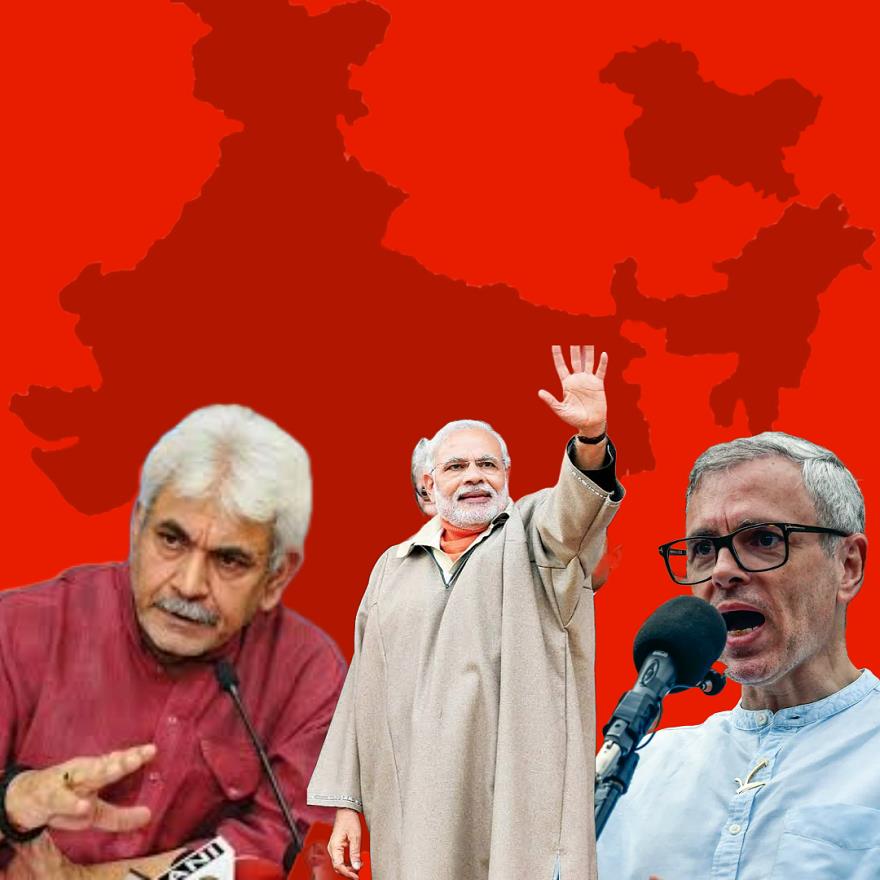
Chronicle Of 2025 Foretold
For representational purposes only.
Every late December as we wait for the new year to usher in, it is also the time to reflect on the outgoing year and hope for the best for the following year. We are at that moment now. Both individually and collectively. However, while our individual lives are personal, collective lives are public. And it is mostly about our collective lives that we reflect back on in our everyday conversations, on social and mainstream media. In Kashmir, we are talking about how 2024 – the fifth year since the abrogation of Article 370 – was for us. The year stands out for the first Assembly election after a decade, which threw up a nearly majority government of the National Conference. This, in a way, makes 2024 a significant year. The election generated some high octane political drama in an otherwise dismal place known invariably for sad news over the past more than three decades. The sudden release of Awami Ittehad Party leader Engineer Rashid in the midst of election really stirred things up. It was as if a big rock had been hurled into the already choppy waters of Kashmir politics. The ripples generated from the impact radiated outwards. But it ended up in a dramatic showdown. Rashid's party could barely win one seat. And the NC, which ran a slow and steady campaign, stole the march over everyone else. The party's large cadre and the organizational structure ensured that it won handsomely in a no-wave election.
The end of the polls, however, has reinstated the Valley's usual air of indifference. For a while though, there was a certain sense of anticipation about the return of statehood. The expectation has now faded away. More so, after the Maharashtra election that has effectively put the BJP back in the ascendent, further firming up its unwillingness to let go of the control in Kashmir anytime soon.
So, what has 2025 in store for the union territory? Largely more of the same. It seems unlikely that the statehood will be restored. Hybrid governance seems here to stay, with some minor frictions now and then. Unlike in New Delhi, where the AAP government has frequently engaged in public spats with the Lieutenant Governor, the NC-led government in J&K may not be in a position to replicate it. The BJP with 29 seats in the Assembly and backed by its government at the centre will always be looking for an opening to form the government. Only thing that prevented the saffron party from forming the government in the union territory was that the voters in Kashmir largely rallied around the National Conference that got 42 seats. The NC-Congress-CPI(M) have 49 seats between them. And in the event of any unlikely defection in the NC in future, the BJP could very well be forming J&K's first Jammu-dominated elected government, led probably by a Hindu chief minister.
However, even otherwise, the BJP-led central government is a de-facto ruler in the existing hybrid arrangement with power being shared between the Lieutenant Governor Manoj Sinha and the NC-Congress alliance – albeit unequally in favour of the former.
The arrangement suits the BJP and it may prefer to stick with it for an indefinite time. This reality is likely to keep the NC-led government's urge to assert itself in check, lest it antagonize centre.
At the national level too, 2025 doesn't promise any dramatic change. True, Assembly elections in New Delhi and Bihar will be keenly watched. The BJP will try to win New Delhi and retain the Nitish-led government in Bihar. Both prospects look very much possible, more so after
the saffron party's stunning win in Maharashtra.
Over the past decade, the BJP has recurrently sneaked from behind to snatch electoral victories from the jaws of defeat, like in Haryana and Maharashtra. So much so that this has made it challenging to take the party's setbacks at their face value. It is now safe to assume that when the BJP loses an election or two, it doesn't mean that the party has lost favour with its voters.
One should realize that the party will be certain to stage a spectacular comeback in the next electoral contest. This has been the story of the party since 2014. Occasional reverses have punctuated the consistent run of its victories. After every loss, the BJP goes back to the drawing board, analyzes and introspects the outcome, then fights back. This renews the party, unlike the opposition that hardly plans ahead or starts campaigning early.
Maharashtra loss has already caused rumblings within the INDIA bloc. Another electoral loss, and the alliance could come apart at the seams.
As 2025 unfolds, the political dynamics in Kashmir and across India appear set to continue along predictable trajectories, defined by hybrid governance in the former and the BJP's dominance nationally. Yet, within this apparent stability lies the potential for subtle shifts-whether through the assertion of regional voices like the NC in Kashmir or the evolving strategies of opposition alliances at the national level.
- Views expressed in the article are the author's own and do not necessarily represent the editorial stance of Kashmir Observer

Legal Disclaimer:
MENAFN provides the information “as is” without warranty of any kind. We do not accept any responsibility or liability for the accuracy, content, images, videos, licenses, completeness, legality, or reliability of the information contained in this article. If you have any complaints or copyright issues related to this article, kindly contact the provider above.






















Comments
No comment